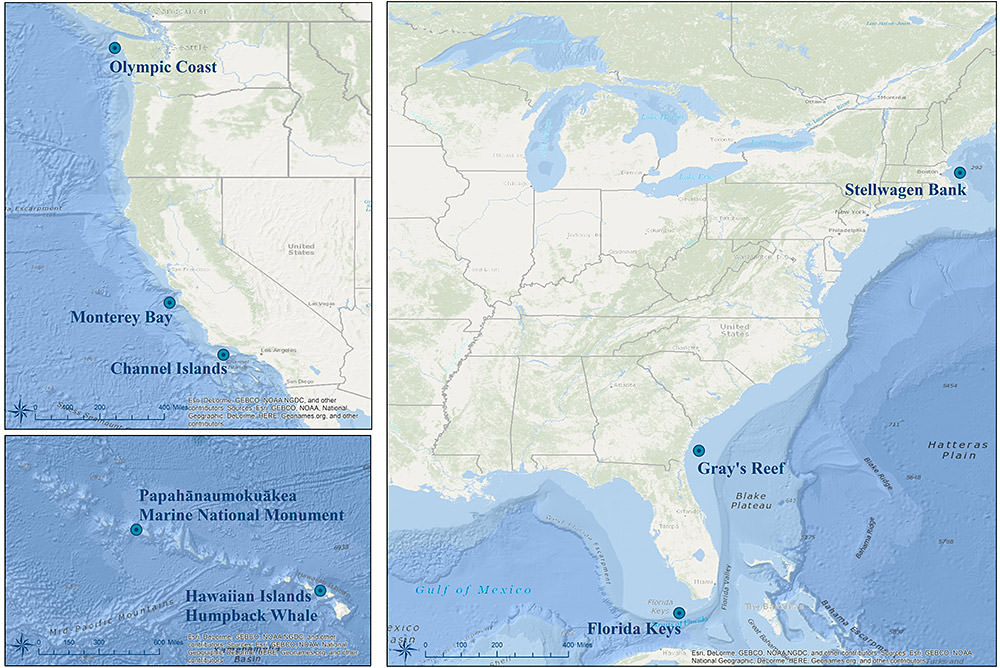Vessel Detection Events Recorded at SanctSound Site GR03_03
This record represents the individual vessel events detected from raw passive acoustic
data. Events are identified from the long-term spectral average (LTSAs) created for
each site with a 5 s, 48 kHz resolution. The LTSA is analyzed in blocks where the
calibrated power spectral density estimates are averaged in user-defined low, medium
and high frequency bands. These data were recorded at SanctSound Site GR03_03 between
October 17, 2019 and December 02, 2019.
- Cite as: NOAA Office of National Marine Sanctuaries and U.S Navy. 2021. Vessel Detection Events Recorded at SanctSound Site GR03_03, SanctSound Data Products. NOAA National Centers for Environmental Information. https://doi.org/10.25921/ngwa-c422. [access date].
- 10.25921/ngwa-c422
- NCEI Metadata ID: gov.noaa.ncei.pad:NOAA-Navy-SanctSound_GR03_03_ships
gov.noaa.ncei.pad:NOAA-Navy-SanctSound_GR03_03_ships
| Search Data |
|
| Download Data |
|
| Distribution Formats |
|
| Ordering Instructions | Contact NCEI for other distribution options and instructions. |
| Distributor | NOAA National Centers for Environmental Information ncei.info@noaa.gov |
| Dataset Point of Contact | NOAA National Centers for Environmental Information ncei.info@noaa.gov |
| Dataset Point of Contact | Carrie Wall NCEI Passive Acoustic Archive Lead NOAA National Centers for Environmental Information pad.info@noaa.gov |
| Coverage Description | Site GR03_03 |
| Time Period | 2019-10-17T19:00:00Z to 2019-12-02T23:00:00Z |
| Spatial Bounding Box Coordinates |
West:-80.8949
East:-80.8949
South:31.367517
North:31.367517
|
| Spatial Coverage Map | |
| General Documentation | |
| Associated Resources |
|
| Publication Dates |
|
| Edition | Final SanctSound Data Product |
| Dataset Progress Status | Complete - production of the data has been completed |
| Data Update Frequency | As needed |
| Purpose | These data are available to the public for a wide variety of uses including scientific research and analysis. |
| Dataset Citation |
|
| Cited Authors |
|
| Principal Investigators |
|
| Collaborators |
|
| Publishers |
|
| Acknowledgments |
|
| Theme keywords | Global Change Master Directory (GCMD) Science Keywords
|
| Data Center keywords | Global Change Master Directory (GCMD) Data Center Keywords
|
| Platform keywords | Global Change Master Directory (GCMD) Platform Keywords
|
| Instrument keywords | Global Change Master Directory (GCMD) Instrument Keywords
|
| Place keywords | Global Change Master Directory (GCMD) Location Keywords
|
| Project keywords | Global Change Master Directory (GCMD) Project Keywords
|
| Use Constraints |
|
| Access Constraints |
|
| Other Constraints | Cite as: NOAA Office of National Marine Sanctuaries and U.S Navy. 2021. Vessel Detection Events Recorded at SanctSound Site GR03_03, SanctSound Data Products. NOAA National Centers for Environmental Information. https://doi.org/10.25921/ngwa-c422. [access date]. |
| Fees |
|
| Processing Steps |
|
| Instrument |
|
| Platform |
|
Last Modified: 2023-06-15
For questions about the information on this page, please email:ncei.info@noaa.gov
